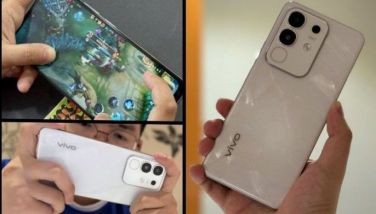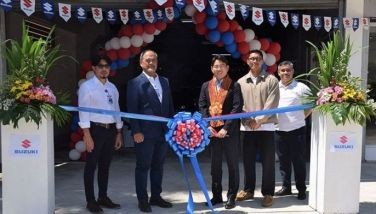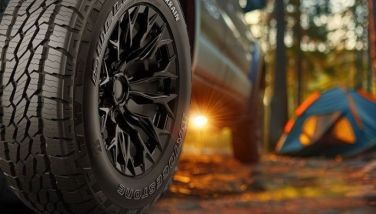How safe is your car
MANILA, Philippines - Whether you’re shopping for a new or used car, it’s important to spend time making sure it’s safe. While choosing a “safe bet†probably isn’t a top priority for the typical car buyer, more and more people are beginning to understand the importance of occupant protection. After all, you’re transporting your most precious cargo of all: your loved ones.
Choosing the safest car isn’t as simple as counting the number of crash test stars. Yes, crash test results play a huge factor, but a safe car is much more than simply having a tough body. Automotive safety is closely intertwined with a vehicle’s design and systems and how they work together to protect the occupants. In order to understand the importance of the various safety features of a modern passenger car, we’ve listed down the things you need to look for. Check your car (or your potential new car) if it has the features indicated here and find out how it fares.
A well-maintained car
No matter what type of vehicle you drive, the most basic safety requirement is having a well-maintained one. No amount of additional safety equipment can save you if your car doesn’t have the right amount of brake fluid or tire pressure.
It’s important to do a daily visual check for things such as tire inflation and fluid leaks before setting off on any trip. Check all vital fluids weekly; power steering fluid, radiator coolant, and brake fluid should be at optimal levels. Do a monthly check-up of the condition of your tires (inflation and wear) and bulbs to see if they’re working properly.
Anti-Lock Braking System (ABS)
ABS prevents a vehicle’s wheels from locking during a panic-braking situation, allowing the driver to maintain greater steering control—a key factor in avoiding a collision. However, ABS does not guarantee your ability to avoid a crash. It’s important not to drive at excessive speeds or perform extreme steering maneuvers. Modern ABS systems often have two related safety systems built in:
Electronic Brakeforce Distribution (EBD)
As the name implies, EBD automatically varies the amount of force applied to each of a vehicle’s brakes based on road condition, speed, and load. EBD can apply more or less braking force to each wheel to maximize stopping power while maintaining vehicle control. Typically, EBD distributes more braking pressure to the rear brakes, minimizing the effect of weight transfer.
Brake Assist
Brake Assist senses emergency braking by detecting the speed or force at which the driver presses the brake pedal and boosts the power as needed. The system may override the driver and fully apply the brakes resulting in a shorter stopping distance.
Supplemental Restraint System (SRS) a.k.a. airbags
Designed to work in conjunction with seatbelts (hence the name “Supplemental Restraint System†or SRS), airbags inflate to prevent occupants from hitting the dashboard, steering wheel, or windshield depending on the speed at impact and the stiffness of the object struck. The same is true for side airbags, where they inflate to prevent occupants from hitting the door or not allowing objects to crash through it.
For maximum effectiveness, it’s recommended that you leave at least 10 inches (254 mm) of space between your breastbone and the airbag. Children can also be killed or seriously injured by an airbag, so children below 12 years old are recommended to sit in the rear seat.
Parking sensors
Parking sensors are proximity sensors for road vehicles that can alert the driver of unseen obstacles during parking maneuvers. The most common variety uses ultrasonic proximity detectors to measure the distance to nearby objects. Parking sensors generate an audible or visual feedback.
Reversing camera
A reversing camera improves the rearward view and can assist drivers in detecting persons or objects in the path of a reversing vehicle.
Lane departure warning
This system is designed to minimize accidents by addressing the main causes of collisions: driver error, distractions, and drowsiness. The system relies on distinct lane markings and can warn the driver if their vehicle is getting close to the lane markings. Different systems use different warnings—from an audible signal to the use of a vibrating steering wheel. The intention is simply to make the driver aware that the car is in danger of crossing the line.
It must be noted that the effectiveness is reduced if the lines cannot be seen clearly, such as in heavy rain or fog. More high-tech systems can apply gentle braking to one wheel or apply direct steering input to keep the car in the right lane.
A car circa 1990s onward
Given how crash safety tests are constantly modernized, the chances of surviving a crash in a modern car is much greater than those in an older one. Most car manufacturers only got their safety act together in the 1990s onwards. Before this time, most passenger cars, especially smaller ones, were a fairly serious safety risk.
Seatbelts
Invented in 1958 by a Volvo engineer, the seatbelt is the most basic—and most effective—form of automotive protection. In fact, Republic Act 8750 or The Seat Belt Use Act of 1999 requires that all motor vehicles must be equipped with seatbelts and that all front occupants must be buckled in at all times.
In the event of a crash, seatbelts are designed to keep you inside the vehicle. They also reduce the risk of head or chest injuries when colliding with the steering wheel, dashboard, or windshield. Newer seatbelt designs also have additional features that improve its performance such as adjustable upper belts and seatbelt pre-tensioners that retract the seatbelts to remove excess slack.
Electronic Stability Control (ESC)
Known by various trade names such as DSC, DTSC, ESP, VDC, VSA, and VSC, Electronic Stability Control can stop drivers from losing control of their cars. ESC senses when a vehicle is starting to spin out (oversteer) or plow out (understeer), and it automatically adjusts the engine output and can even apply the brakes to a single wheel.
While ESC copes with lateral or sideways movement, an integral part of electronic stability control—traction control—helps with the driving or longitudinal movement. However, the system has its limitations: it can’t keep a vehicle on the road if the speed is simply too great for the curve and the available traction.
ire Pressure Monitoring System (TPMS)
TPMS uses pressure sensors directly mounted on the wheels of a vehicle. The pressure inside the tire is measured using a pressure monitor with the information subsequently sent to the vehicle to warn the driver of under- or over-inflation of a tire. An indirect TPMS method uses the vehicle’s ESC to measure wheel rotation; if it detects one wheel spinning faster than the others, it could mean a deflated tire.
Blind spot warning system
Blind spot warning systems detect the distance and closing speed of objects in adjacent lanes and alert the driver if a collision is imminent. Typically, this occurs when the car is just behind and to one side of the vehicle it is overtaking. It is a common mistake for drivers to change lanes when there is a vehicle in this so-called “blind spotâ€â€”a maneuver that causes many crashes. Several manufacturers have developed camera- or radar-based systems that monitor the blind spot and help a driver to change lanes safely.
Automated braking system
Using different sensors such as radar, video, infrared, ultrasonic, or other technologies, some vehicles may automatically apply the brakes when sensing an imminent collision with another vehicle, person, or obstacle. It can either pre-charge the brakes or apply the brakes altogether to slow the vehicle without any driver input. Some systems may even use GPS sensors to detect fixed dangers such as approaching stop signs.
Night vision camera
Night vision cameras allows the driver to see in darkness or poor weather beyond the reach of the headlights through the use of an infrared camera mounted on the car’s front bumper.
Adaptive cruise control
Adaptive cruise control automatically adjusts a vehicle’s speed to maintain a safe distance from vehicles ahead. It uses technology such as radar or laser sensors that allow the vehicle to slow down when approaching another vehicle ahead and accelerate again to the preset speed when traffic allows.
Adaptive headlights
Adaptive headlights react to the steering inputs of the car and automatically adjust to illuminate the curve ahead. Sensors direct small electric motors built into the headlight casing to turn the headlights in sync with the steering wheel.
Auto Assist parking
Parallel parking is an ordeal for many drivers, but with parking space limited in big cities, learning to squeeze your car into a tiny space is a vital skill. Fortunately, technology has an answer: cars that park themselves. Imagine finding the perfect parking spot, but instead of struggling to maneuver your car back and forth, you simply press a button, sit back, and relax.
Automated parking uses sensors (located in front and at the back of the car) that determine a viable space. Most systems will require the driver to apply the throttle or brakes, but more advanced systems will do everything for you.
Mili—The portable lifesaver
Stuck in traffic and your smartphone battery goes dead? Simply connect your iPhone or Android smartphone with Mili’s Power Smart 2 or universal car charger and you’re good to go. Exclusively distributed by Waido Corporation, Mili offers a wide variety of high-quality accessories in unique designs for the iPhone 4 and 5, Samsung Galaxy Series, Blackberry and other mobile devices such as tablets.
Their latest product for the local market is a mobile communications solution for the worsening traffic problem in the metropolis. Mili’s Power Smart 2 Car Charger and the Universal Charger 2 are devices designed and engineered for the modern lifestyle.
The MiLi Power Bank series are small, minimalist yet stylish charging devices. It is made of elegant hard plastic that doesn’t feel cheap when handled and come in white and black casings in a dozen designs. All MiLi Power Banks have a 30-pin iPod connector for iPhones or iPods. It also comes with a USB cable which lets you connect the MiLI Power Bank to a PC to charge it.
MiLi Power Bank chargers take about 3 hours to fully charge its (Li-Pol) battery. When your iPhone/iPod is connected to it while charging, it will fully charge your device first before it charges itself.
The MiLi Power Bank Charger series available in Power Mac Centers, Rustan’s, SM Appliance Centers, Mobile 1 and in select computer stores nationwide. For details on how power-up on the go, log on to www.miliphil.com or at facebook.com/MiLiPhilippines.
- Latest



























